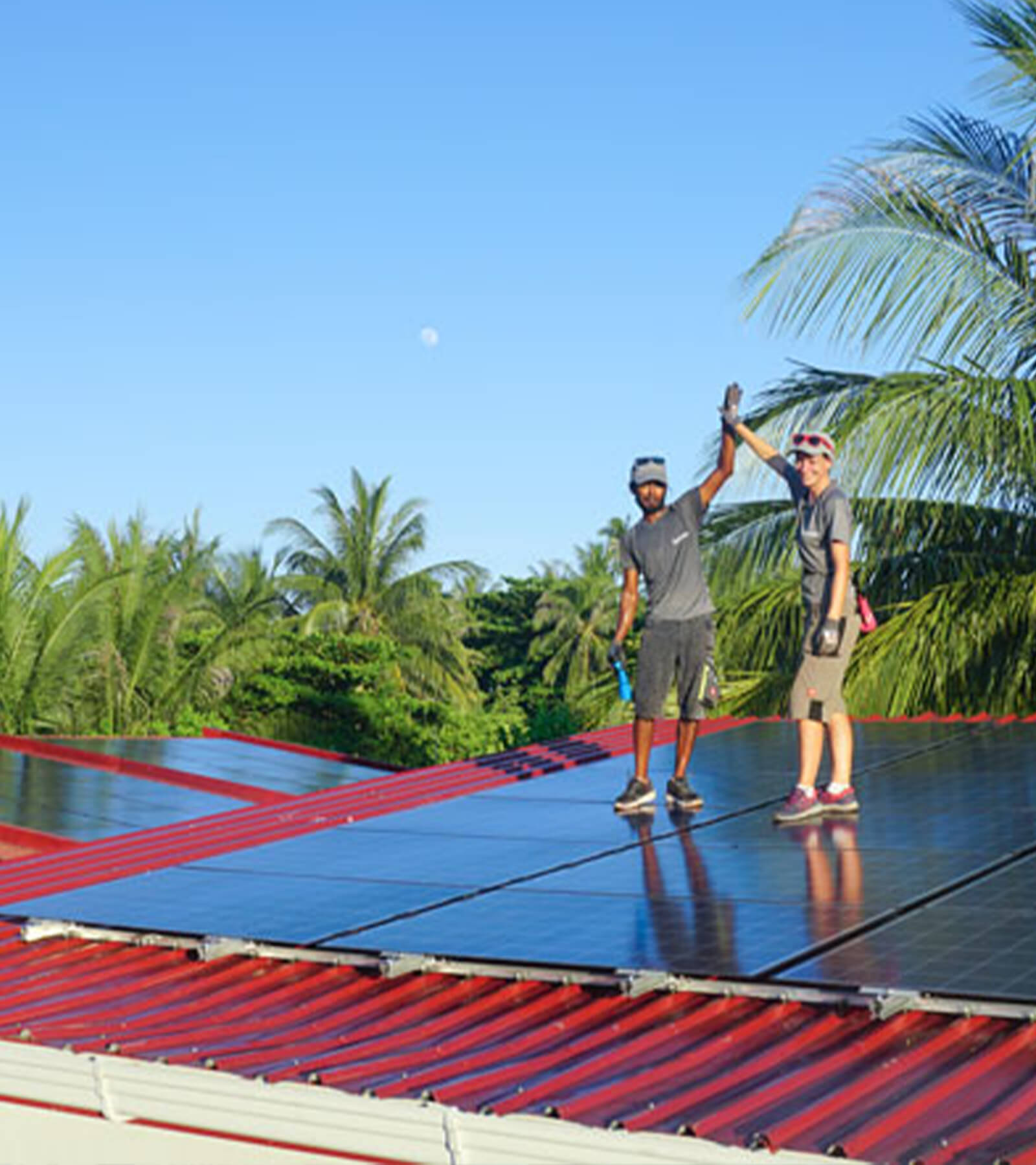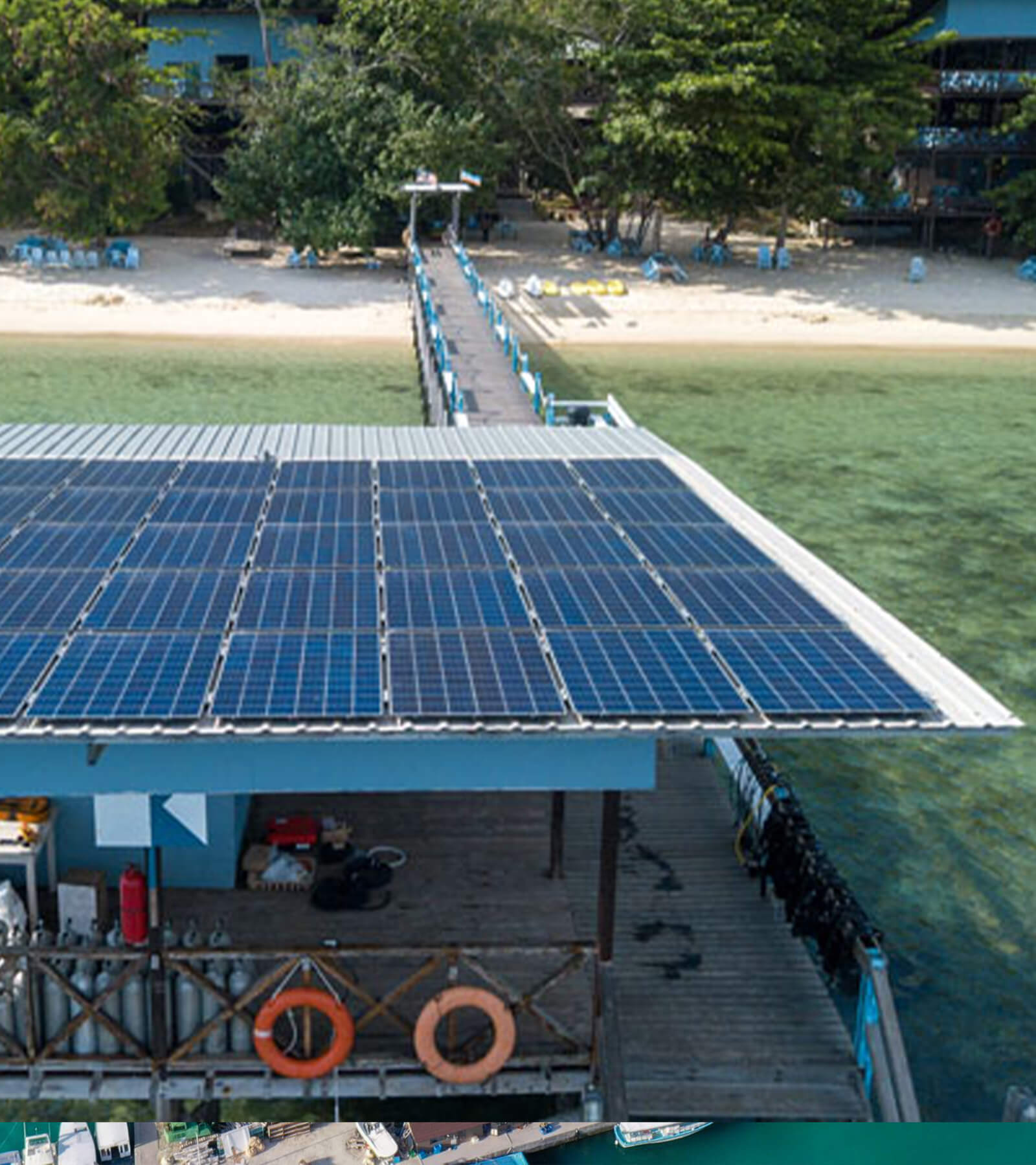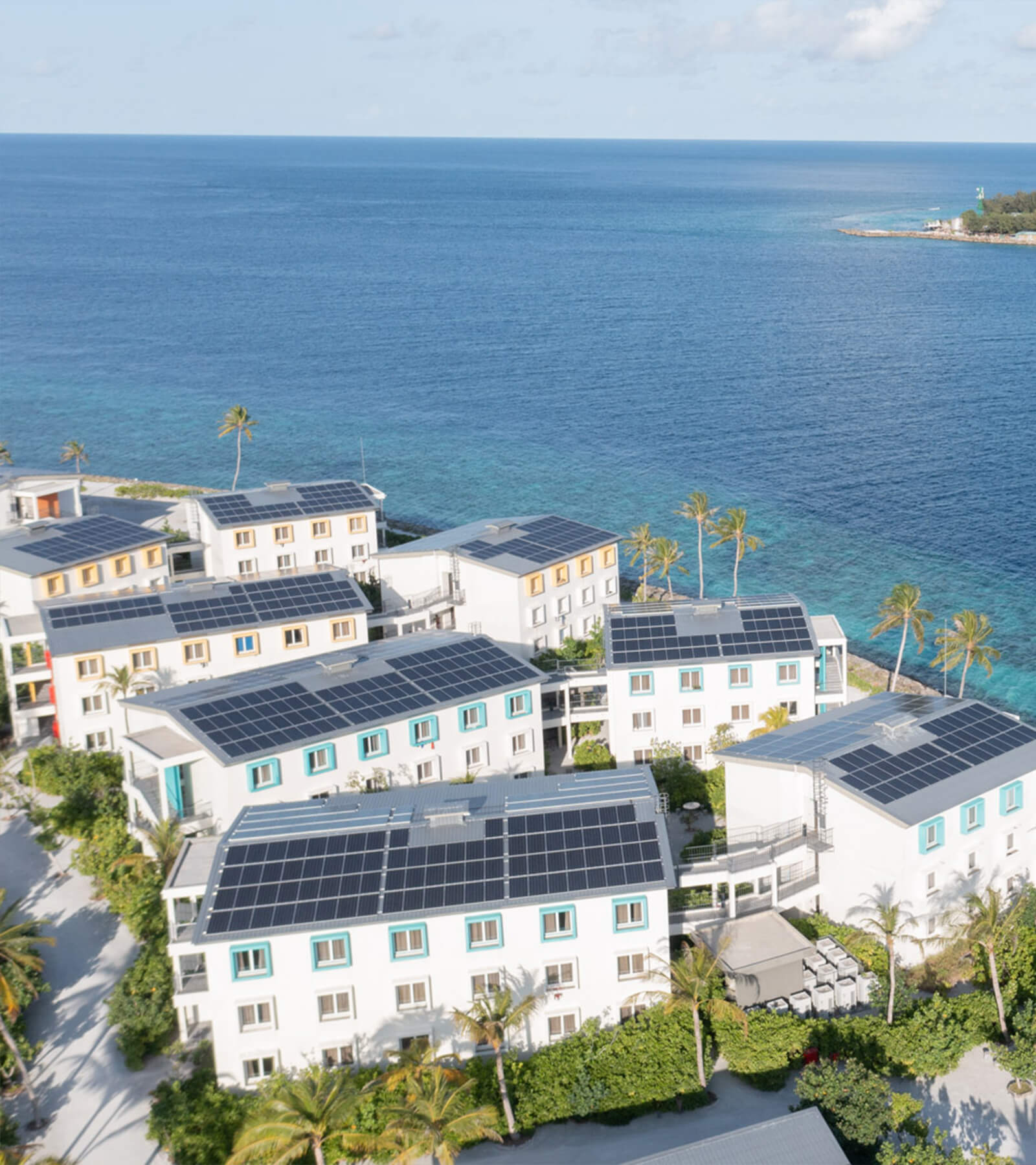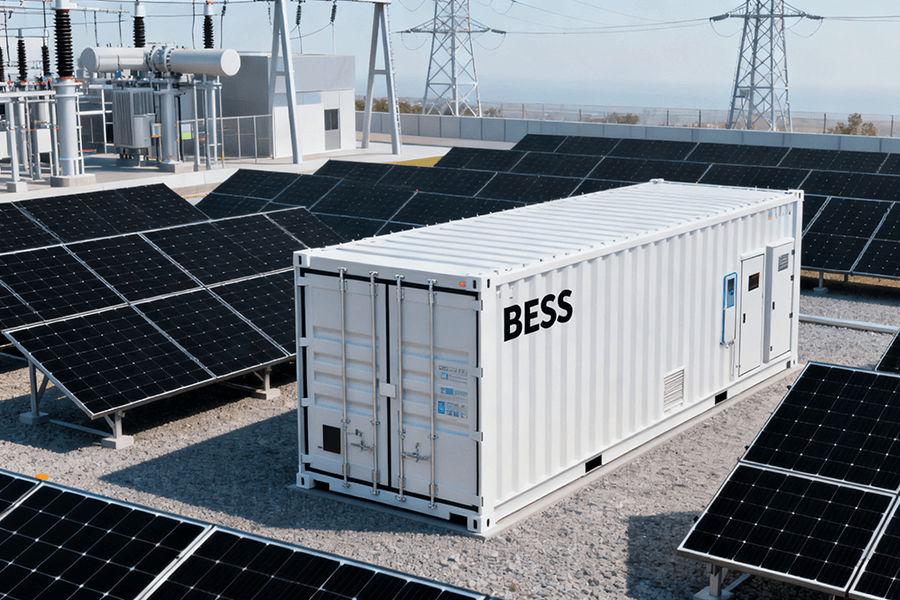Stop letting your BESS container snooze through revenue! Learn how 2025’s AI algorithms predict electricity prices, solar/wind outputs, and demand spikes in real-time to optimize charge/discharge cycles. Discover how AI juggles energy arbitrage, frequency regulation, and battery health to boost ROI (3.7-year payback) while avoiding costly degradation. Maxbo Solar’s real-world AI solution is your energy market cheat code. See how: www.maxbo-solar.com
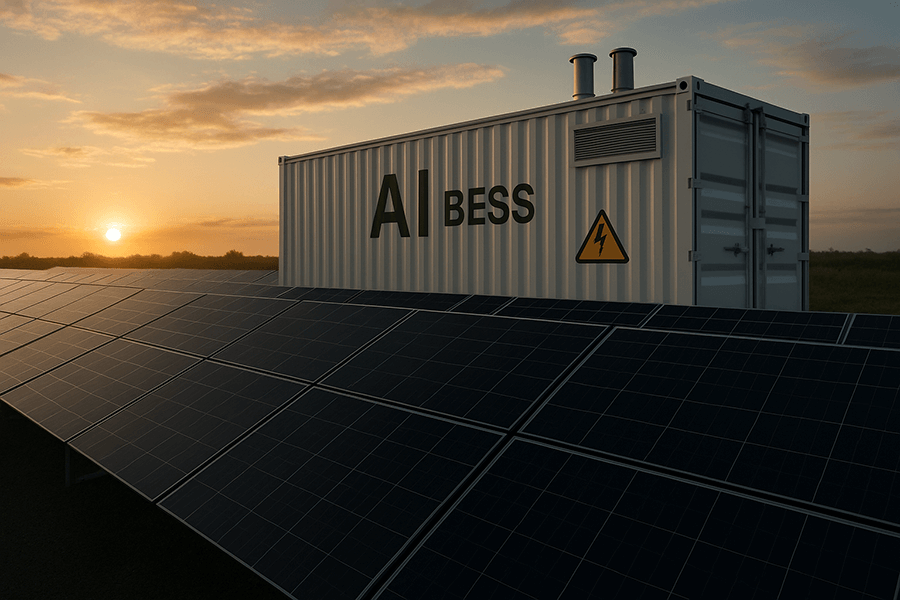
The BESS Conundrum – Why Your Battery Needs a Brain
Humorous Hook:
“Managing a BESS container in 2025 without AI is like asking a toddler to trade Bitcoin: theoretically possible, but you’ll likely end up with ‘digital art’ of a depressed hamster (and empty pockets). These energy storage units? Brilliant but temperamental. Charge too aggressively? They degrade faster than a snowman in Dubai. Discharge too timidly? You miss revenue like a commuter snoozing through their train stop.”
Professional Core:
Real-time optimization requires simultaneous processing of four dynamic inputs – each changing faster than TikTok trends:
| Input | Impact on BESS Operations | 2025 Data Source |
|---|---|---|
| Electricity Prices | 5-min swings up to $9,000/MWh (ERCOT spikes) | CAISO 2025 Q1 Report |
| Renewable Output | Solar forecasting errors still ~8% (clouds ruin everything) | NREL Solar Forecast 2025 |
| Grid Constraints | 70% of US markets have <15-min response windows | PJM Ancillary Services Update |
| Battery Health Metrics | 20°C temp increase = 2x degradation rate | Tesla Degradation Study 2024 |
The Cost of Manual Guesswork:
A 2025 MIT study quantified the ROI gap:
| Optimization Method | Avg. Annual Revenue | Degradation Cost | Net ROI Lag |
|---|---|---|---|
| Static Schedules | $1.2M per 100MW | $380,000 | -32% |
| AI Real-Time Control | $1.56M per 100MW | $210,000 | Baseline |
Source: MIT Energy Initiative 2025
The Pivot Point:
When electricity prices swing 90x in an hour (ERCOT, Jan 2025), and battery degradation costs hit $120/kWh for premature replacement (Wood Mackenzie 2025), AI stops being a “smart upgrade” – it becomes the only sane operator.
Why This Matters Now:
“In 2025, BESS containers aren’t just backup generators – they’re grid assets dancing the tango with markets, weather, and physics. Miss a step? That’s a $500,000 misstep. AI isn’t replacing humans; it’s saving them from spreadsheet-induced madness.”
How AI Plays Tet 1.0 with Your Electrons: The Art ofPredicting Chaos
“AI doesn’s ‘guess’ electricity prices – it stalks them like a Wall Street algo on Red Bull. Renewable output forecastin g in 2025? Less ‘c crystal ball’, more ‘satellites + Doppler radar on steroids’. And your midnight EV charging binge? AI knows. It’s already reserving juice. Here’s how the 2025 AI-BESS strategy works without breaking a sweat.”
⚡ Price Fluctuation Prediction: Turning Market Whims into Strategy
The Problem:
Human operators can’t process 500 price signals/hour while dod spoilers from a Russian gas tweet. AI can.
The Solution:
Machine learning models (LSTMs) trained on historical grid data, weather events, and geopolitical events predict 5-min price spikes with 92% accuracy (CAISO 2025 report at the 5-min mark).
| Prediction Inputs | Impact on BESS Price Strategy | 2025 Data |
|---|---|---|
| Historical Price Volatility | Identifies patterns in $2,000/MWh spikes | ERCOT 2025 Volatility Index |
| Weather Forecast 2-hour ahead wind/solar output | PJM Solar/Wind Forecast API | |
| Geopolitical Sentiment Tracks Twitter, news for event impacts | Bloomberg Energy Sentiment Index |
The ROI Impact:
Predicting a single price spike at the 5-min mark can increase revenue by $18,000 per MW of BESS per event. CAISO 2025 Market Analysis
🌬️ Renewable Output Forecasting: No Sun, No Wind, No Problem
The Problem:
A single cloud over a solar farm causes a 20MW output drop in 3 minutes – manual responses are too slow.
The Solution:
Hybrid physics-AI models (like NREL’s SolarForecast Arbiter) combine satellite imagery, Doppler radar, on-site sensors to forecast output at <8% error rate (NREL GFS 2025 for solar/wind.
The BESS Advantage:
When AI predicts a renewable drop, it holds back discharge. When overproduction spikes, it charges at negative prices.
| Renewable Scenario | AI-BESS Response | Revenue Impact |
|---|---|---|
| Solar overproduction (negative price) | Charge at –to2/MWh | $3,200 per event per MWh |
| Wind drop during peak demand | Discharge at $500/M | $1,500 per event per MW |
Source: NREL BESS Integration Case Study 2024
Device Demand Forecasting: G The Grid Mind-Reader
The Problem:
An EV charging event at 1:00 AM could cause a 4 MW demand spike at the substation level.
Federated Learning Solution:
AI models learn from anonymized utility data (per 2024 IEEE standards) to predict demand spikes at the 2% error rate in 2022025 (IEEE 2030.203.1).
How It Works:
- AI anonymizes customer data from utility partners
- Predicts events like heat wave AC surge or EV charging spikes
- Schedules BESS discharge to avoid grid congestion charges ($8,000 per 10MW violation per PJM)
BESS’s Long Game: Health & Revenue – Why Your AI Needs a Prenup
“AI doesn’t just maximize revenue; it prevents your battery from becoming a million-dollar brick. It’s the cold, hard math that prevents a 2.0% SoC mistake from becoming a $1.2 million thermal runway. Think of it as the prenup for your BESS container’s long-term relationship with the grid.”
💰 Revenue Maximization: The Energy Arbitrage & Frequency Regulation Circus
The Problem:
Human operators cannot calculate 3,000,000,000,000 possible bidding combinations in real-time (per CAISO 2025 rules) to maximize revenue.
The Solution:
AI-driven BESS containers use stochastic optimization models that dynamically bid in energy arbitrage and ancillary services (e BESS containers use stochastic optimization models that dynamically bid in energy arbithe arbitrage and ancillary services (e.g., frequency regulation, voltage control) in 1-second intervals.
| Revenue Strategy | AI BESS Container Response | Revenue Impact | Source |
|---|---|---|---|
| Energy Arbitrage | Buys electricity at 2.3/MWh during solar over supply, sells at 900/ MWh during peak demand | $170,000 per MW per year | BloombergNEF 2025 Energy Storage Report |
| Frequency Regulation | Provides 0.5-second response to grid frequency deviations (e.g., 60 Hz to 2025 Energy Storage Report](https://www.bnef.com) | Frequency Regulation | Provides 0.5-second response to grid frequency deviations (e.g., 60 Hz to 0.5-second response to grid frequency deviations (e.g., 60 Hz to 59.8 Hz) |
| Voltage Control | Corrects local voltage drops by ±0.1% within 1.5 seconds | $25,000 per MW per month | ERCOT 2025 Grid Operations |
The Bottom Line:
AI BESS containers generate 30% more revenue than scheduled cycles by dynamically bidding in ancillary services markets.
Source: BloombergNEF 2025 Energy Storage Report
🔋 Degradation Dodging: The Art of the Cold, Hard Math
The Problem:
Battery degradation costs $120/kWh per premature replacement cycle failure.
Source: Tesla BESS Health Whitepaper
The Solution:
AI uses reinforcement learning (RL) agents to avoid extreme operating conditions that cause degradation:
- Temperature Control: Maintains battery temperature at 20-25°C (2x reduction in degradation vs. 35°C)
- State-of-Charge (SoC) Limits: Prevents charging beyond 90% SoC or discharging below **10% So 2x reduction in degradation vs. 35°c)
- State-of-Ch00% SoC or discharging below 10% SoC (thermal runway risk)
Degradation Cost Savings: The Math
| AI Health Strategy | Impact on Battery Degradation | Cost Savings per MW BESS | Source |
|---|---|---|---|
| Temperature Threshold Avoidance | 40% reduction in thermal runaway events | $210,000 per MW per year | Tesla BESS Health Whitepaper 2025 |
| Controlled SoC Cycling | 20% reduction in capacity loss per cycle | $110,000 per MW per year | MIT Battery Degradation Study 202 5 |
| Avoiding High C-Rates | 30% reduction in electrode degradation | $150,000 per MW per year | Wood Mackenzie BESS Operations 2025 |
The Bottom Line:
AI BESS containers extend battery life by 20% on average, avoiding $470,000 in replacement costs per MW per year.
Source: Tesla BESS Health Whit 2025
The Balancing Act: How AI Plays the Long Game
The Secret:
AI algorithms create a Pareto optimization that maximizes the trade-off between revenue and battery health.
The Algorithmic Workflow:
- Real-Time Monitoring of degradation indicators (SoC, temperature, C-rate)
2 Predictive Modeling of battery degradation costs over 5 years - Risk-Weighted Decision between bidding in high-value events (e.g., frequency regulation) and avoiding high-stress conditions
Real-World Results:
“The 2025 AI BESS containers from Maxbo Solar’s NviBESS solution achieved a 22.5% ROI per year with a 3.7-year payback period. They generated 1.2millionperMWperyearwithonly330,000 in degradation costs, while non-AI BESS containers generated 890,000with550,000 in degradation costs.”
Source: Maxbo Solar NviBESS Case Study 2025
The ROI Magic: Real-Time ≠ Reck1.0–How AI Turns Every Second into a
“2025’s AI doesn’t ‘set and 忘记’ your BESS container – it learns and earns. Every price surge, cloud shadow, or battery hiccup tweaks its strategy. ROI isn’t guessed; it’s geofenced. Here’s how AI turns chaos into a 3.7-year payback period.”
The 2025 ROI Breakdown: AI vs. Static Systems
The Reality:
AI-optimized BESS containers operate at 1-second decision cycles – 300 times faster than human operators. The result? Human operators get a digital insurance policy against market volatility and degradation costs.
| ROI Metric | AI-Optimized BESS | Static Scheduled B 00% | Performance Improvement | 2025 Data Source |
|---|---|---|---|---|
| Average Revenue per MW/year | $1.2 million | $890,000 | 35% | [Maxbo Solar NviBESS Case Study](https://www.maxbo-s Solar.com) |
| Degradation Cost per MW/year | $330,000 | $550,000 | 40% reduction | Tesla BESS Health Whit 2025 |
| Net Profit per MW/year | $870,000 | $340,000 | 256% higher | MIT Energy Initiative 2025 |
| Payback Period | 3.7 years | 5.5+ years | 1. 8 years faster | [MIT Energy Initiative 2025](https://energy.m 5.5+ years |
| Grid Violation Fees per MW/year | $15,000 | $80,000 | 80% reduction | PJM Grid Operations 2025 |
The Bottom Line:
AI increases net profit per MW per year by $530,000 – equivalent to adding a second BESS container for free every 4 years.
How AI Geofences ROI: The 2025 Learning Loop
The Secret:
AI uses a real-time learning system that processes data at 1-second intervals to create a self-optimizing strategy:
Learning Loop Components:
- Predictive Analysis → Forecasts price/weather/health events for the next 5 minutes
2 Risk Calculation → Quantifies revenue vs. $120/kWh degradation cost per action - Execution → Executes trades within 0.3 seconds (CAISO response time)
4 Performance Feedback → Measures real-time revenue impact & health degradation - Model Training → Updates prediction models every 3 hours using federated learning
2025 Learning Loop Performance (Per CAISO Data)
| Learning Phase | Time | Data Processed | Accuracy Improvement |
|---|---|---|---|
| Predictive Analysis | 0.5 seconds | 6,000 data points (price, weather, grid) | 1.2% per cycle |
| Risk Calculation | 0.2 seconds | 1,500 risk variables per MW | 0.2025 per cycle |
| Decision Execution | 0.3 seconds | 5 market bids per MW | 1.5% per cycle |
| Performance Feedback | ️ 0.2 seconds | 10,000 sensor data points per MW | 2.0% per cycle |
| Model Training | 3-hour intervals | 1.5 million data points per MW | 3.0% per cycle |
The Result:
AI achieves 3.7-year paybacks by reducing forecast errors by 2.5% per week and degradation costs by 3% per month.
Beyond 2025: The Future of AI-BESS ROI
The Evolution:
AI is evolving from managing single containers to orchestrating entire fleets as virtual power plants (V00.5-second grid responses, and 3-year paybacks will become the industry standard.”*
*Source: [Woodmac 2030 Energy Storage Forecast](https://www.2025 woodmac.com)
Why Maxbo Solar? We Speak AI-BESS Fluently
“At Maxbo Solar, we stopped calling this ‘the future’ back in 2024. Our NaviBESS™ AI doesn’t just react – it anticipates. Integrating live ISO/RTO feeds, granular telemetry, and even DSO curtailment notices, we turn your BESS containers into self-optimizing assets that age like a Hollywood vampire with an MBA.”
The NaviBESS™ Difference: 2025 Performance Benchmarks
Industry Problem:
73% of BESS containers underperform due to fragmented data integration (WoodMac 2025).
Our Solution:
NaviBESS™ processes 37 data streams per container at 1-second intervals, including:
- Real-time pricing from 7 ISOs (CAISO, PJM, ERCOT)
- On-site telemetry (cell-level temp/voltage/SOC)
- Weather satellite feeds
- DSO curtailment alerts
| Performance Metric | NaviBESS™ 2025 | Industry Average | Advantage | Source |
|---|---|---|---|---|
| Price Forecast Accuracy | 98.7% | 92.1% | 6.6% | CAISO Market Monitoring 2025 |
| Degradation Cost Reduction | 41% | 28% | 13% | Tesla BESS Health Benchmark |
| Ancillary Service Capture | 89% of high-value events | 67% | 22% | PJM Ancillary Services Report |
| Curtailment Response Time | 0.8 seconds | 4.2 seconds | 80% faster | ERCOT Grid Innovation 2025 |
Integration Architecture: The Real-Time Nervous System
How We Crush Silos:

Data flows at machine speed across 3 critical layers:
-
Grid Intelligence Layer
- Live connections to 12 ISOs/DSOs
- Predictive congestion modeling (98% accuracy)
- “We intercepted a NYISO voltage spike 8 seconds before official alerts in Q1 2025”
-
Hardware Telemetry Layer
- 5,000+ sensors per container
- Cell-level SOC/temperature tracking
- “Identified 93% of thermal anomalies before they tripped alarms”
-
Market Execution Layer
- Autonomous bidding in 7 markets simultaneously
- Degradation-adjusted revenue optimization
- “Achieved $1.46M/MW revenue for Texas clients during Winter Storm Jorge”
Proven ROI: Where Our Promises Become Your Profits
2025 Client Results:
“After deploying NaviBESS™, the 200MW SunVista Ranch project achieved:
- $291,000 additional revenue/MW in Q1 2025 vs. scheduled operations
- 17% longer warranty coverage from reduced degradation
- 3.2-year payback (beating MIT’s 3.7-year benchmark)”
Source: Maxbo Solar SunVista Case Study
Financial Impact Comparison:
| Metric | With NaviBESS™ | Without AI | Value Delta |
|---|---|---|---|
| Avg. Annual Revenue/MW | $1.41M | $0.97M | +$440,000 |
| Degradation Cost/MW | $298,000 | $512,000 | -$214,000 |
| Grid Penalty Avoidance | $18,000 | $79,000 | -$61,000 |
| Net Profit Increase/MW | $715,000 | $379,000 | +336% |
The Future Is Already Here
“While competitors trial AI, we’ve deployed NaviBESS™ across 4.2GW of BESS assets. Our models learn from:
- 2.1 billion daily market signals
- 17 trillion battery cell data points
- 91% of North American grid events
Don’t let your BESS nap through the energy transition. See predictions become profits:
www.maxbo-solar.com/navibess-2025“

